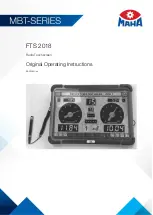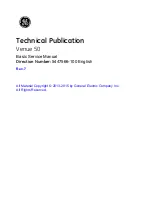
Cooling System
Maintenance
Cooling System Safety
•
Swallowing engine coolant can cause poisoning;
keep out of reach from children and pets.
•
Discharge of hot, pressurized coolant or touching
a hot radiator and surrounding parts can cause
severe burns.
– Always allow the engine to cool at least 15
minutes before removing the radiator cap.
– Use a rag when opening the radiator cap, and
open the cap slowly to allow steam to escape.
Coolant Specification
The coolant reservoir is filled at the factory with a
50/50 solution of water and ethylene glycol base
extended-life coolant.
Important:
Use only commercially available
coolants that meet the specifications listed in the
Extended Life Coolant Standards Table.
Do not use conventional (green) inorganic-acid
technology (IAT) coolant in your machine. Do
not mix conventional coolant with extended-life
coolant.
Coolant Type Table
Ethylene-Glycol Coolant
Type
Corrosion Inhibitor Type
Extended-life antifreeze
Organic-acid technology
(OAT)
Important:
Do not rely on the color of the coolant
to identify the difference between conventional (green)
inorganic-acid technology (IAT) coolant and extended-life
coolant.
Coolant manufacturers may dye extended-life coolant in
one of the following colors: red, pink, orange, yellow,
blue, teal, violet, and green. Use coolant that meets the
specifications in the Extended Life Coolant Standards
Table.
Extended Life Coolant Standards
ATSM International
SAE International
D3306 and D4985
J1034, J814, and 1941
Important:
Coolant concentration should be a
50/50 mixture of coolant to water.
•
Preferred:
When mixing coolant from a
concentrate, mix it with distilled water.
•
Preferred option:
If distilled water is not available,
use a pre-mix coolant instead of a concentrate.
•
Minimum requirement:
If distilled water and
pre-mix coolant are not available, mix concentrated
coolant with clean drinkable water.
Checking the Coolant Level
Service Interval:
Before each use or daily
CAUTION
If the engine has been running, the
pressurized, hot coolant can escape and
cause burns.
•
Do not open the radiator cap when the
engine is running.
•
Use a rag when opening the radiator cap,
and open the cap slowly to allow steam to
escape.
1.
Prepare the machine for maintenance; refer to
Checking the Coolant Level (page 62)
.
2.
Open the hood, and wait for the engine to cool;
refer to
Opening the Hood (page 41)
.
3.
Carefully remove the radiator cap (
).
g370427
Figure 108
1.
Cap (expansion tank)
3.
Neck
2.
Radiator cap
4.
Full mark
4.
Check the coolant level in the radiator.
Note:
The coolant level is correct if it is to the
top of the filler neck of the radiator (
5.
Check the coolant level in the expansion tank.
62















































